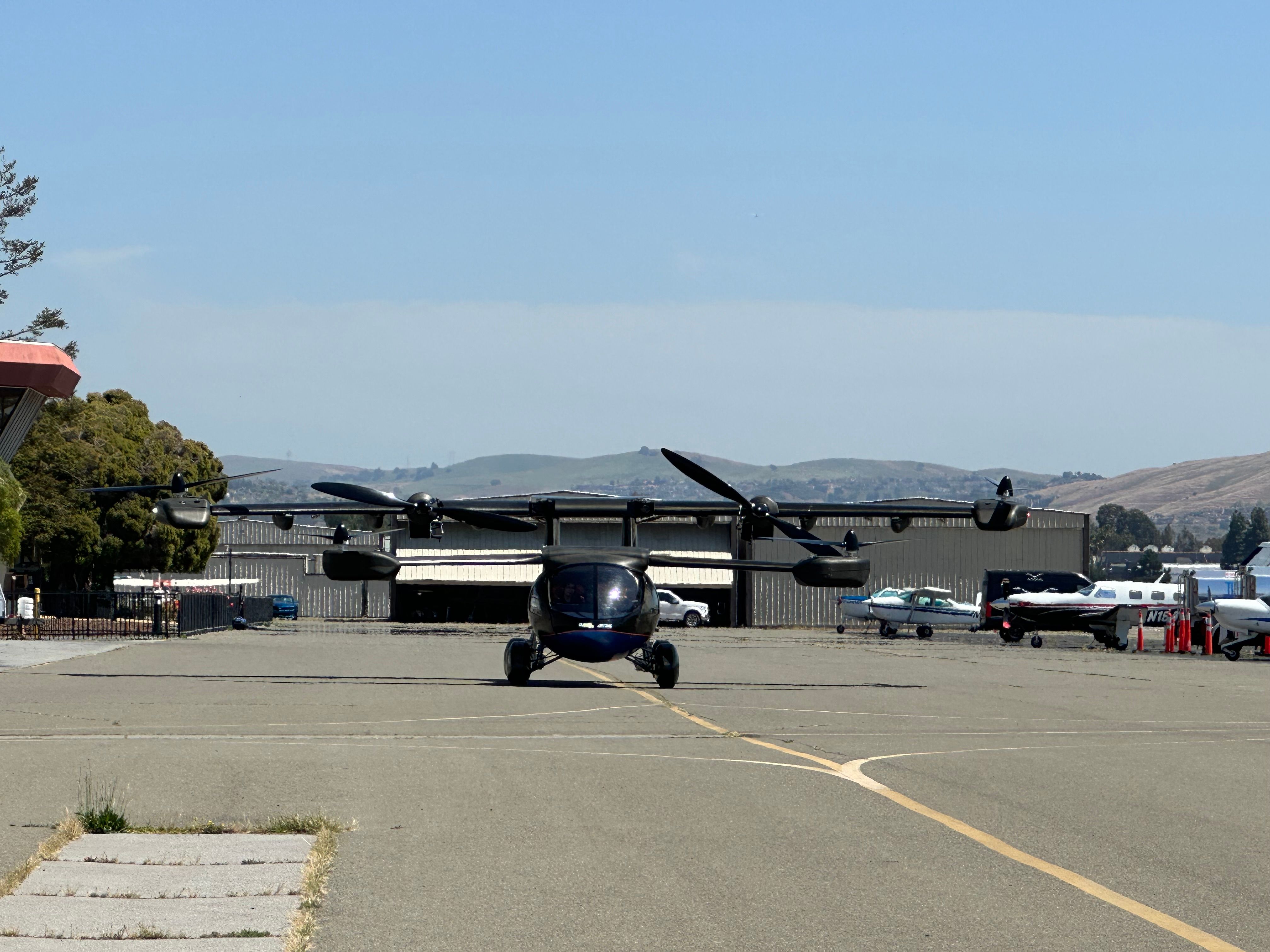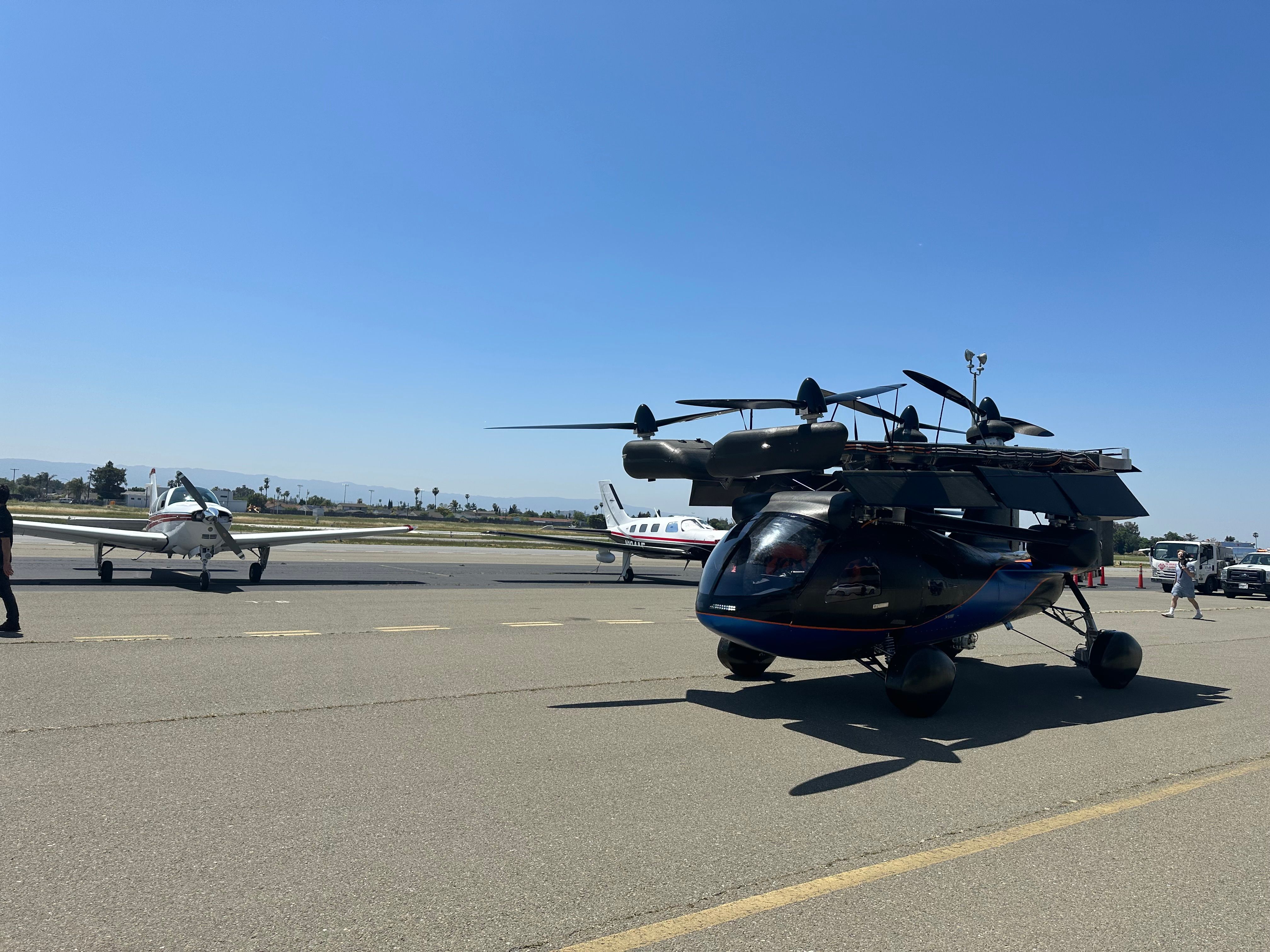Another flying car has been certified to begin flight testing. California-based ASKA has received special airworthiness certification from the Federal Aviation Administration (FAA) to conduct test flights of its four-seater passenger vehicle.
The vehicle is also designed to be fully roadworthy, with large wings and propellers that fold in and rest on top of it while on the ground.
Where did it come from?
The company started product development in 2018 with subscale models and has now certified its larger-than-life prototype to begin flight testing. The SUV-sized aircraft debuted at the Consumer Electronics Show in Vegas this January and has been driving on the streets of Silicon Valley ever since, conducting testing and gathering data for this most recent certification.
The functional prototype has received FAA authorization and a Certificate of Authorization to start the type certification process toward commercialization. This Special Airworthiness Certificate signals that ASKA A5 has successfully met all FAA safety requirements, and the aircraft has now progressed to conducting authorized hover tests. Simple Flying spoke exclusively to the company's founders about the recent certification and next steps for the company. Maki Kaplinsky, Chairman & COO of ASKA, shared her excitement to continue in the certification process:
"We are very excited that we are doing the flight tests. We are gathering the data, and we are making good progress for the next milestone of our type certification, which is G-1."
The aircraft faces a lengthy testing and certification process to ensure it meets the airworthiness and environmental requirements necessary to achieve FAA Type Certification Validation.
How does it work?
In contrast to other eVTOLs, ASKA's prototype has folding wings, which allow it to glide. The aircraft also features a ballistic parachute in case of emergency.
It is powered by six motors, all independent of each other to increase safety and redundancy, and is designed to reach speeds of 125 mph. Designed to have a flying range of 250 miles, the flying car also has a traditional fuel engine to provide the 30 minutes of reserve power required by the FAA. The range extender engine charges the batteries in-flight using premium gasoline from conventional gas stations.
Get all the latest aviation news right here on Simple Flying.
The company confirmed that it expects users of the vehicle will be required to have a private pilot's license to operate the aircraft, which can seat three passengers in addition to the pilot. The car is designed to do the first and last mile on the road and most of the commuting in the air. It can take off moth vertically and traditionally on a runway using its wings and tilting rotors.
With this new certification, ASKA is now conducting hover testing in its prototype to gather the requisite data for further development.
Are flying cars safe?
There is still a long process after the aircraft is completed before it can be fully certified by the FAA. Even in non-experimental categories, aircraft often have to wait over two years once completed to gain certification. Completed models like Boeing's 777X have been flying for years while they undergo the testing and demonstration flights needed for FAA Certification.
Simple Flying spoke to Vance Hilderman, author, and expert on aviation safety and certification, about the future of eVTOL and Urban Air mobility vehicles. Even once the initial requirements have been met, there is an ongoing process to monitor safety processes at each step. Aircraft must be at least ten times safer per passenger kilometer than cars to carry paying passengers. Hilderman expressed his confidence that only aircraft meeting the most stringent standards would be allowed to carry paying passengers.
"Everyone's got to follow the same rules as Airbus and Boeing, although they're lower on that rigor scale, with less complexity, they still have to follow all the same rules. There's no certificate awarded to allow paying passengers until they've shown that they've met those tens of thousands of rules, so we can be pretty safe."
The size of the aircraft also affects how it can be certified. In the US, any subscale photo prototype weighed in more than 55 pounds needs special airworthiness certification. ASKA's prototype weighs over 5,000 lbs, which is 30% larger than the final model is expected to be when launched in 2026.
Fellow flying car startup Alef, which also achieved an FAA certification, confirmed to Simple Flying that its Model A prototype will have an estimated weight of 850 lbs but that "Current weight is much below this." The car will also initially be a Low-Speed Vehicle, with the intention to achieve full automotive certification in the future. Representatives for Alef Aeronautics declined requests to provide Simple Flying with photos of the prototype used for its certification last month.



